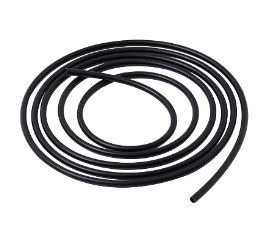The flexibility and operability of a hose pipe series are crucial factors that influence its compatibility with various systems and applications. Here’s an in-depth analysis of how these aspects impact compatibility:
Hoses with high flexibility are easier to install in tight or complex spaces. They can bend around obstacles and fit into configurations that rigid hoses cannot accommodate. This flexibility reduces the need for extensive modification of the surrounding infrastructure.Flexible hoses can connect to fittings that might not align perfectly. Their ability to accommodate slight misalignments simplifies installation and reduces the risk of connection failures or leaks.
Hoses with a small bending radius are less likely to kink or collapse under stress. This is essential in systems where tight bends are required. A hose that maintains its shape and flow capacity despite sharp bends is crucial for compatibility with compact or intricate setups.In systems where hoses need to navigate around equipment or obstacles, flexibility ensures that the hose can adapt to the layout without compromising functionality.
Flexible hoses can be more easily adapted to custom or non-standard configurations. This makes them suitable for specialized applications where standard hoses might not fit.
Hoses must meet the pressure requirements of the systems they connect to. A hose with a suitable pressure rating ensures that it can handle the operational demands without failure, making it compatible with high-pressure applications.The internal diameter and smoothness of the hose affect its ability to maintain consistent flow rates. Hoses that offer low resistance to flow are compatible with systems requiring precise and steady fluid transfer.
The hose material must be resistant to the substances it will carry. For example, hoses used in chemical processing must withstand chemical exposure without degrading. This compatibility ensures that the hose performs reliably in its intended environment.Hoses should operate effectively across the temperature ranges encountered in their application. Hoses that remain flexible and functional in extreme temperatures are essential for systems that experience high or low heat.
The hose must be compatible with various fittings and connectors used in the system. A hose that can connect to both standard and specialized connectors ensures flexibility in system design and integration.Proper fit and sealing are crucial to prevent leaks. Hoses that fit well with connectors and fittings help maintain system integrity and prevent operational issues.

Hoses that are resistant to abrasion, UV radiation, and other environmental factors will have a longer service life and remain compatible with systems exposed to harsh conditions.Hoses that require minimal maintenance or have self-cleaning properties enhance their operability. Reduced maintenance needs mean less downtime and easier integration into systems where reliability is critical.
Hoses that are flexible and operationally sound are easier to integrate into existing systems. Their ability to handle various pressures, temperatures, and chemicals ensures that they can be used across different applications without extensive modifications.Flexible hoses can often be retrofitted to older systems or integrated into new designs without requiring significant changes to the existing infrastructure.
Hoses that maintain flexibility and performance under varying conditions contribute to the overall efficiency of the system. This ensures that the system operates smoothly and effectively, with minimal disruptions.
By understanding these factors, you can assess how well a hose pipe series will perform and integrate into different systems, ensuring optimal functionality and compatibility.

 English
English Español
Español русский
русский












